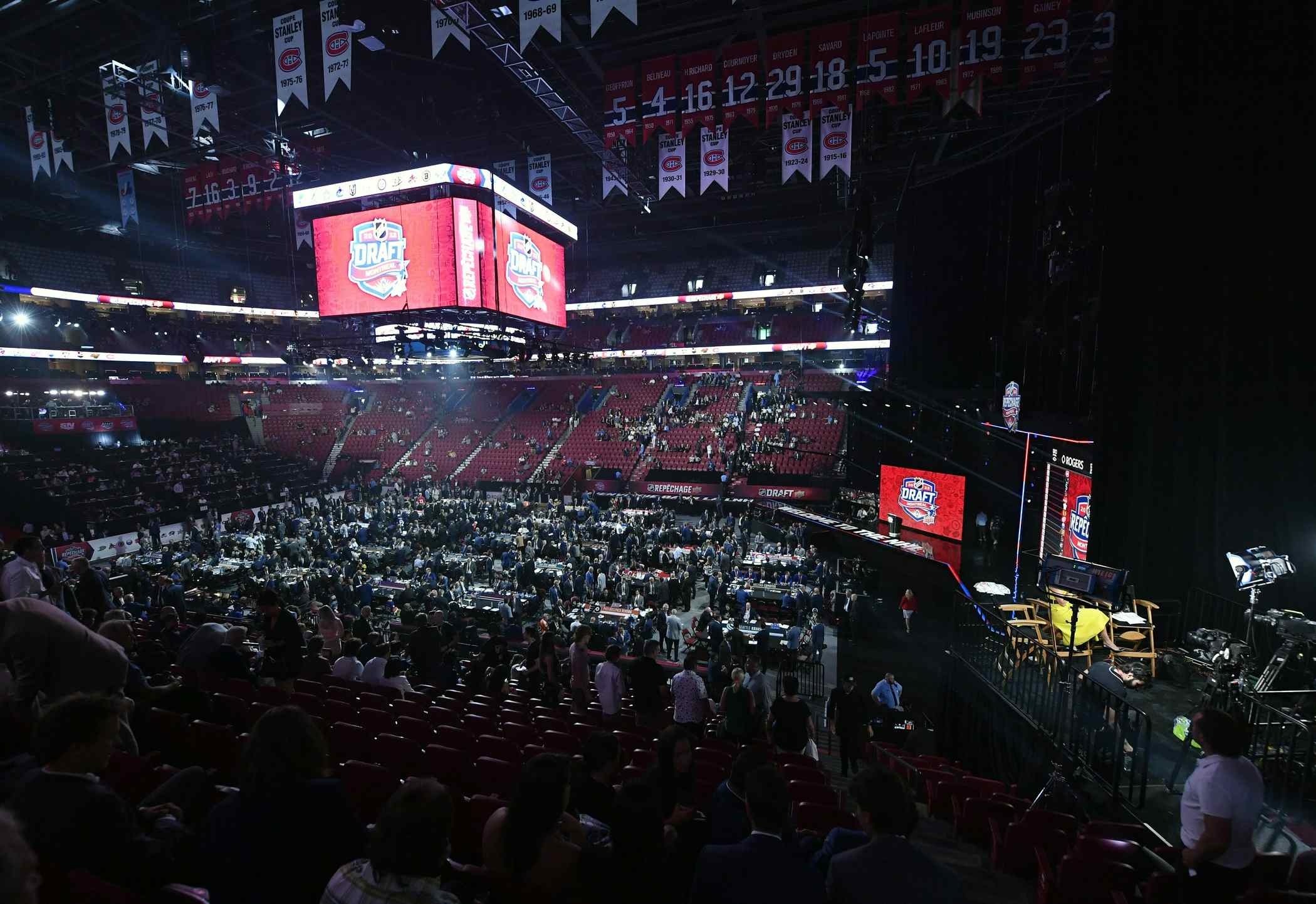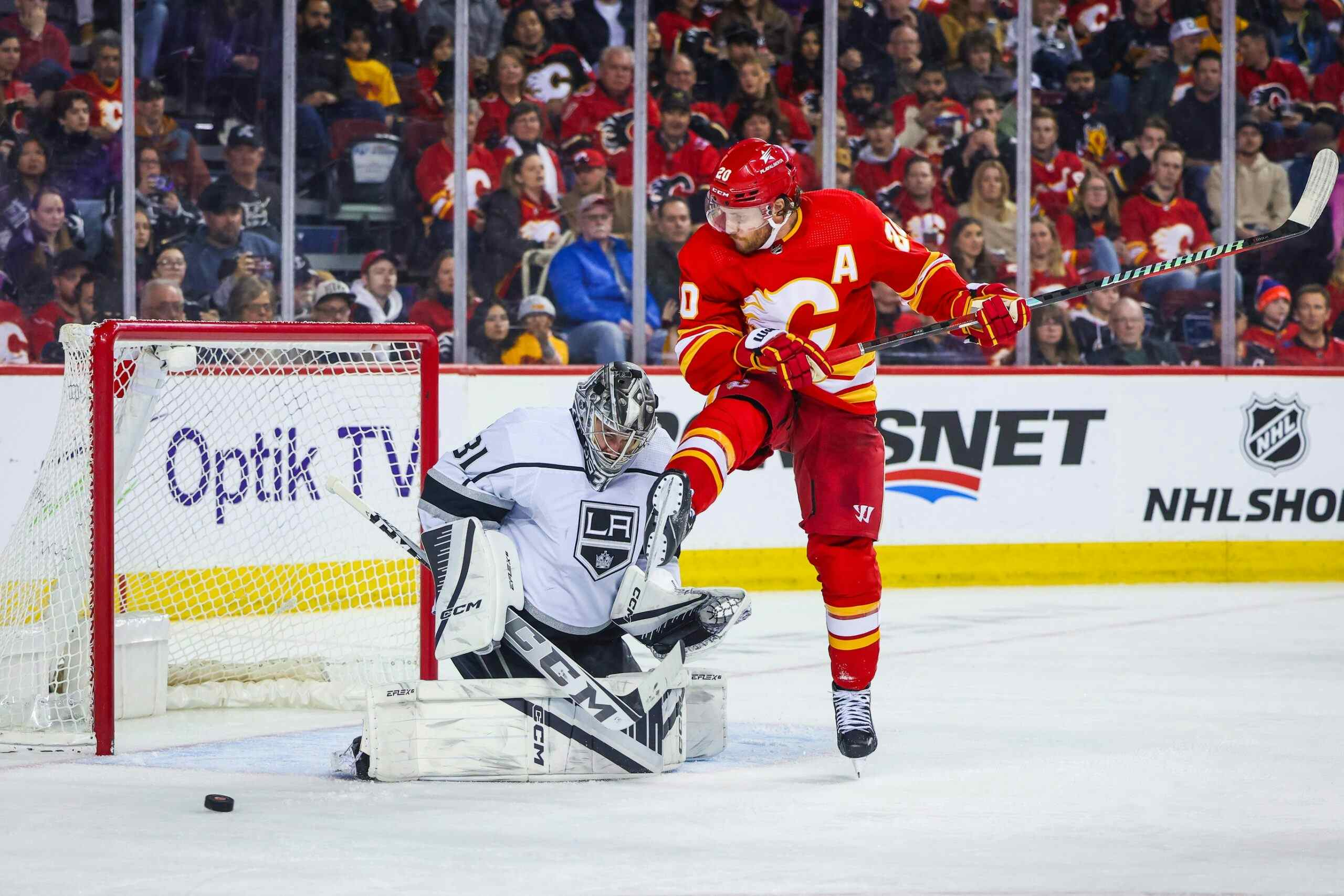The 2016 offseason report card

The Calgary Flames have turned the 2016 offseason into a bit of a turnstile. Specifically up front and between the pipes, the Flames have undergone a dramatic overhaul as they try to improve on their rather dreadful 2015-16 campaign. But with all this deckchair shuffling, is Calgary actually poised to be a better team? I think they are for one specific reason.
I was going to make this a series going position by position, but I figured that would be blatantly and gratuitously stretching content to fulfill writing requirements. That’s not how I roll, although I wonder if it should be. Also, more report card articles mean more awful photoshop jobs, so you’re welcome.
So, as Ari pointed out last week, it’s been a busy offseason. Let’s find out how much better the Flames have gotten.
Goaltenders
In: Brian Elliott (trade with St. Louis), Chad Johnson (UFA via Buffalo)
Out: Jonas Hiller (Swiss League), Karri Ramo (UFA), Joni Ortio (UFA)
This one is a no-brainer: the Flames have gotten significantly better in net this summer. Going from a trio of Hiller, Ramo, and Ortio to a duo of Elliott and Johnson should see the team improve by a handful of wins simply by default. You may remember Calgary boasted the NHL’s worst goaltending last year, so even small improvement was going to be significant.
Luckily, adding Elliott and Johnson qualifies as more than small improvement. Taking a look at everyone’s numbers from last season paints that picture fairly clearly. Charted below for the five goalies in question is their save percentage totals (overall and even strength) and their 2015-16 workloads.

On different teams, Elliott and Johnson combined for 78 starts last year with an average save percentage of around 0.925. That combined save percentage is about 34 points higher than what we saw from Calgary’s trio last season. A save percentage in and around that range last year would have easily accounted for at least five more wins, if not more.
Now, there’s no guarantee things translate from team to team so smoothly. Elliott’s teams in St. Louis, for instance, have finished top five in goals against for the last three years running, which is down to more than just goaltending. On the other hand, the Flames have been one of the NHL’s worst possession teams for the last three years running. If we don’t see improvement in that area, Elliott and Johnson are bound to see their totals drop a little.
Workload is a question, too. Elliott has never started more than 48 games in a season and thus has never proven to be a number one over the course of a full season. The same is true for Johnson; the 40 starts he made last year is by far the highest total of his career. I have fewer questions about Johnson, though, mainly because he wasn’t brought in to be Calgary’s number one. Elliott was and until he sustains a high level of play over 55 starts, it’s going to be a question mark.
Evaluation: Significantly better. You just can’t argue how much better the Flames should be in net for the coming season. Even if both Elliott and Johnson take steps back, Calgary should still be well ahead of where they were through 2015-16. Goaltending is the single largest reason why I think the Flames are an improved team from one year to the next.
Defencemen
In: No additions
Out: Jakub Nakladal (UFA), Ladislav Smid (potential LTIR)
The Flames haven’t done much at all on their blueline this summer, which is just fine. Calgary happens to employ one of the deeper group of defencemen in the league, at least when it comes to their top three. As such, they weren’t in need of a major back end overhaul. Even without changes, though, I still think the Flames have the potential to take a step forward on their blueline this season.
My main reason for that is Dougie Hamilton. I’m fully expecting a much better Hamilton in year two with Calgary after witnessing his rapid improvement in year one. Hamilton struggled in his first couple months with the Flames, but it was a much different story for the remainder of the season. The evidence of that is below.

Hamilton was the first to admit it was a challenge to adapt to a new team and a new style of play. Now with a new coaching staff focused on offensive possession, Hamilton should excel even more. Let’s also not forget how poorly Hamilton was used for much of last season. He was clearly the third best defenceman on the team, yet he was being used like a number four or five. I’m somewhat confident that’s going to change come October.
Jyrki Jokipakka is in a similar boat. He’ll enter his first training camp with Calgary this fall after being acquired from Dallas at the trade deadline in the Kris Russell deal. I liked Jokipakka in the 18 games he played with the Flames and I still think there’s a ceiling he’s yet to reach. Jokipakka will be 25 to start the season and a full camp with his new team should be nothing but a good thing.
Calgary may still have a move or two up their sleeve on the blueline. As Kent Wilson wrote recently, a trade involving Dennis Wideman isn’t out of the question as there are realistic spots for him to land. If the Flames are willing to eat some salary, moving Wideman becomes even more feasible. Furthermore, GM Brad Treliving has talked openly about his desire to maybe add one more piece on the back end. I still think they should bring back Nakladal, but I’m not sure that’s in the cards.
Evaluation: Slightly better. Calgary has yet to augment their blueline this offseason so it’ll be tough for them to take a huge step forward. But with a better second year from Hamilton, a full season for Jokipakka, and continued improvement from TJ Brodie, I think this group has a good chance of being a little better than last year.
Forwards
In: Troy Brouwer (UFA via St. Louis), Alex Chiasson (trade with Ottawa), Linden Vey (UFA via Vancouver)
Out: Joe Colborne (Colorado), Josh Jooris (New York Rangers), Mason Raymond (buyout), Derek Grant (Buffalo)
The Flames have overhauled their group of forwards more than any other position this summer. They made a splash in free agency with Brouwer, made a couple of minor deals for Chiasson and Vey, and were content to let a number of other players walk away. I didn’t even list the likes of Bill Arnold, Drew Shore, and Kenny Agostino above; much like Colborne and Jooris, they weren’t qualified and became UFA’s at the beginning of the month.
I’m just not certain how much better the Flames have gotten up front.
Let’s look at Brouwer to start, as he’s been a pretty consistent performer since 2009-10. Over those seven seasons, Brouwer has never posted fewer than 17 goals and 33 points; he’s gone as high as 22 goals and 43 points. He’s also been extremely durable, missing just six games combined over that same span.
But Brouwer also turns 31 next month and has never really made a meaningful impact on how his team generates offence. Brouwer’s possession numbers have been relatively average in his stops with Chicago, Washington, and most recently St. Louis. In a lot of ways, I look at him and Colborne as almost a straight swap from one year to the next with the reasoning below.

Brouwer and Colborne made very similar impacts on their teams last year. Now, Brouwer has a much longer track record of production than Colborne does, so there’s a better chance for similar results this season. From one year to the next, though, it’s not like going from Colborne to Brouwer is going to be a massive step. Yes, Brouwer and Colborne are different players, but from a strictly offensive perspective, there’s not a huge difference.
Further down the depth chart, I actually think the Flames might have taken a step back. The loss of Jooris is not ideal and I’m not sure who steps in to fill the reliable, effective role he’s played the last two years. I don’t think Garnet Hathaway is ready, I don’t think Lance Bouma is capable, so I guess we look to Chiasson and/or Vey. Let’s compare their 2015-16 seasons.

For my money, Jooris was the most effective player of the bunch. If Calgary deploys Chiasson in a similar manner there might not be much of a drop. But if they decide to use Chiasson a little further up the depth chart, then I think they take a step back going from Jooris to Vey or anyone else. Regardless, I think the bottom six group of forwards has stayed flat at the very best.
Evaluation: Better. From a player for player standpoint, I don’t think Calgary has gotten better here. Their additions probably balance out their deletions, but they haven’t taken an appreciable step forward up front, at least for me. So then why am I rating them better? Well, with continued steps forward taken by Sean Monahan, Johnny Gaudreau, and Sam Bennett, the Flames should naturally get better up front. I just don’t think the fairly dramatic overhaul is going to make a major difference, good or bad.
Overall evaluation: Better
Personnel changes have made the Flames significantly better in net. The hope is natural progression takes its course and we see improvement on the blueline and up front, too. While nothing is a guarantee and games aren’t played on paper, Calgary should be a much more competitive team in 2016-17.
I’m not ready to say it’ll be enough to lock down a playoff spot, but they should be a whole lot closer. in 2014-15, the Flames made the playoffs by a few points. Two years later, I’m expecting things to be very similar; I think Calgary finishes the season a few points in or a few points out of a postseason berth.
Recent articles from Pat Steinberg





